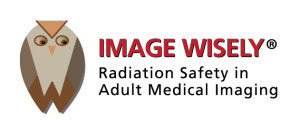What is a PET/CT scan?
PET/CT is a state-of-the-art technique that combines Positron Emission Tomography (PET) with Computed Tomography (CT) to image tissue and organ function. This scan is designed to accurately identify even small areas of abnormal metabolic activity, which are associated with several disease processes. PET/CT’s major clinical impact to date is in cancer diagnosis and staging; however, PET/CT is also a useful modality for imaging the heart and brain. PET/CT can show more than just where tumors are located. PET/CT can reveal whether lesions are benign or malignant and can assess the effectiveness of treatment, whether surgery, chemotherapy, or radiation therapy.
Why Choose Our PET/CT Scan Services in New Jersey?
Expert Radiologists: Our team of experienced New Jersey radiologists specializes in interpreting PET/CT scans, ensuring accurate and reliable results.
State-of-the-Art Technology: We utilize the latest PET/CT imaging technology, delivering high-quality images for precise diagnosis.
Personalized Care: We prioritize patient comfort and safety throughout the imaging process, providing a seamless and stress-free experience.
Collaborative Approach: We work closely with referring physicians to ensure that imaging results contribute to informed treatment plans.
Benefits of PET/CT Imaging:
Early Detection: PET/CT can detect abnormalities at an early stage, allowing for prompt intervention and improved outcomes.
Accurate Diagnosis: By analyzing metabolic activity, PET/CT helps differentiate between benign and malignant lesions, guiding treatment decisions.
Treatment Monitoring: PET/CT enables real-time monitoring of treatment response, ensuring personalized and effective therapies.
Comprehensive Assessment: From cancer staging to heart and brain imaging, PET/CT provides a comprehensive assessment of various conditions.
PET/CT WITH PYLARIFY® **Available to MEDICARE patients**
With metastatic prostate cancer incidence on the rise according to the American Cancer Society, early detection is more important than ever. Princeton Radiology introduces PET/CT with PYLARIFY®, a powerful solution that was recently approved for coverage by the Centers for Medicare and Medicaid Services (CMS).
Benefits of PET/CT scan with PYLARIFY®:
- Accurately identifies sites of disease for newly diagnosed patients who are candidates for definitive treatment
- Identifies sites of metastatic disease in patients who have undergone definitive therapy but have rising PSA
- Detects metastases earlier and more accurately in lymph nodes, bone, and soft tissue than CT scanning or Bone Scan
- Supports informed treatment decisions and planning precisely targeted therapy
WHAT TO EXPECT FROM THE PET/CT SCAN?
When you arrive, a technologist will discuss the PET/CT procedure with you and ask if you have any questions. When you are ready for your PET/CT scan, you will have your blood sugar tested. Next, most patients will receive an oral contrast (barium drink). An IV will then be started, and you will receive an injection of a small amount of safe, radioactive sugar. You will not experience any side effects from this material. You will then be asked to wait very quietly in a seated area. Any activity, even talking or gum chewing, may affect the results of your test. Prior to the scan, you will be asked to empty your bladder.
You will lie on a bed that passes slowly through the scanner. For scanning purposes, it is important that you lie quietly and remain still on the bed during your scan. The length of time between scans can vary depending on the body areas being studied, typically between 30 to 60 minutes. You should plan to spend approximately three hours total time for the entire PET/CT procedure.
Patient Prep
Brochures





